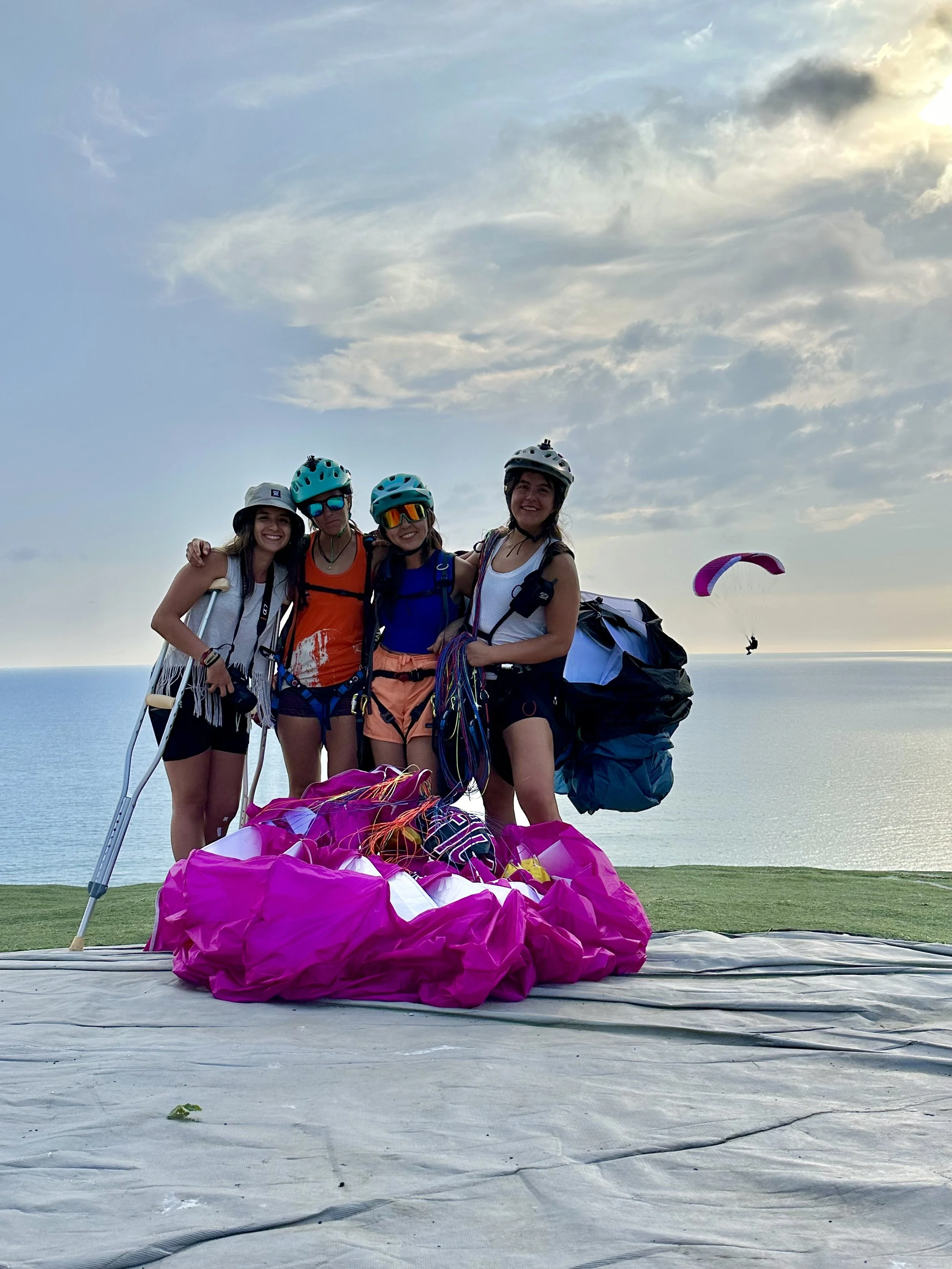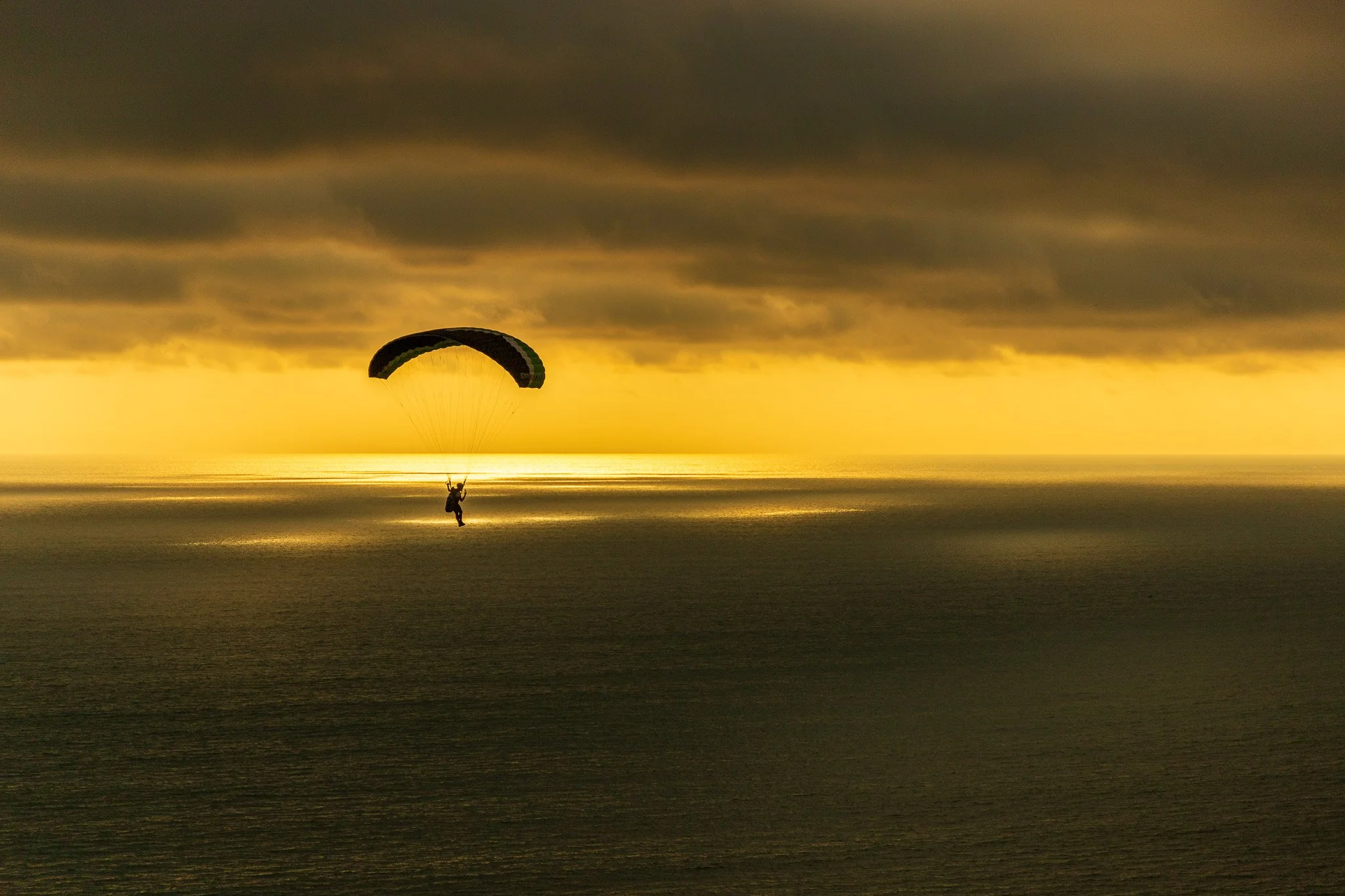“Once you have tasted flight, you will forever walk the earth with your eyes turned skyward” - Leonardo da Vinci
What is Speedflying?
Speedflying is a new and more advanced discipline of paragliding that uses a small, high-performance wing to quickly descend from heights such as mountains... It's a super thrilling sport that combines elements of paragliding and parachuting, creating a unique and adrenaline-fueled experience. Picture this: flying close to the slope, feeling the wind rushing past you, and taking in the amazing views from above. If you’ve seen people do it while skiing, then it’s called speedriding.
Speedflying in Ecuador
Unlike some popular speedflying destinations like the Alps, where ski lifts make accessing the slopes easier, we speedflying pilots in Ecuador take a different approach. We rely on our own two feet as we hike up hills and mountains to reach the perfect launching points for our descents. It's a challenging yet rewarding experience that reminds us to be present every time we do it.
My favorite part of this form of aviation is the simplicity it entails. All I hike with is a backpack that reverses into my harness, carrying my wing, helmet and my Vapur water bottle. This minimalist approach allows for a profound connection with nature, saving money and reducing CO2 emissions since I am not spending on fuel for an engine (except to get to the launch by car). It also opens up a world of possibilities when it comes to takeoff and landing spots.
Volcano Launches
One of the most incredible parts of speedflying in Ecuador is the opportunity to fly off volcanoes. Some of the more experienced speedflyers in Ecuador have already flown off peaks of volcanoes reaching heights right below and even over 19,000ft. Imagine the adrenaline pumping through your veins as you fly off these peaks and into beautiful Andean landscapes instead of walking back down for hours.
"Casitagua Hike and Fly": Speedflying Pioneers
Ecuador is home to Latin America’s only speedflying school: "Casitagua Hike and Fly." Founded by “Gringo” (José Cobo) and Claudia Molestina, both passionate and experienced in speedflying, base jumping, and skydiving, this school has become the go-to destination for speedflying enthusiasts all over the wolrd. I had the privilege of taking their 4-day initial speedflying course in Canoa, Manabí, on the coast of Ecuador in the summer of 2022, two years after they started teaching their friends how to fly during the pandemic. Learning to fly on the beach was an incredible experience as the air density played a crucial role in our flights. I’ve been fortunate to be able to go back every summer to practice my kiting skills.
Mountain Flying
After mastering the basics on the beach, I was ready to take on the mountains. The next course took place in the highlands of Ecuador, near the equator line. First, we practiced short flights on a slope we call the Proximities, and then graduated to flying off the summit of Casitagua at 11,500ft. The speed that comes with high elevation and less air density added a whole new level of adventure to the sport. The feeling of accomplishment when reaching the summit and then gliding through the air with a view of Cayambe and Cotopaxi was simply indescribable.
Women in Aviation
One aspect that has truly stood out during my speedflying journey in Ecuador is the presence of many women participants, including Claudia as my instructor. In a field that is often dominated by men, it’s been quite inspiring to see women being adventurous. As a 4th generation aviator and the first woman in my family, it feels special to carry on with this unique passion. Claudia, José, and I were fortunate to "open" a flight, becoming the first ones to launch from Casitagua into the interior of the crater one afternoon - a never-before-done flight! The farm owner who happened to see us land couldn’t believe his eyes when he saw two girls and a guy there!!
The History of Paragliding
Paragliding, like hang gliding, developed from designs created for the NASA space program and the earliest forms of aviation. American pilot David Barish created one of the first airfoils that helped jump-start the evolution of modern paragliding. In 1965, he flew his Sailwing from a ski resort in New York, calling the activity “slope soaring.” Around the same time, American Domina Jalbert patented the Parafoil, a design that allowed parachutes to glide using ram-air cells. The sport of paragliding took off in 1978 when skydivers launched from Mont Pertuiset in Mieussy, France, gaining media attention and sparking widespread interest.
By 1985, dedicated paragliding wings were being manufactured, and the sport spread globally. Competitions began in 1989, and records for distance and performance continued to be broken. Today, paragliding has evolved into various forms, including speedflying!!
Pictured above: Zuko Carrasco flying off Cotopaxi at nearly 19,000 with the help of his friends. These images are copyrighted by Anna Nicole Arteaga. All rights reserved. Unauthorized use prohibited.
The Dangers
Speedflying, while thrilling, comes with its own set of dangers. A handful of speedflyers in Ecuador have opted for an informal education, learning through experience rather than structured training. While this approach can be effective, it becomes risky when pilots neglect essential knowledge about winds and weather conditions. Ignoring these crucial aspects has lead to dangerous situations and accidents. It's important to balance the adrenaline rush with responsible flying practices, ensuring that the thrill of speedflying doesn't come at the cost of safety. Always prioritize education, continuous learning, and respect for the power of nature!!
My Final Thoughts
Speedflying in Ecuador offers a unique mix of adventure, beautiful landscapes, and time spent in nature. It’s not just a sport; it’s a way of life that pushes you outside your comfort zone. I have learned to become more aware of my surroundings, becoming much more present and careful with every decision I make, as when you’re flying, there is no margin for error. And as with any discipline, the learning never stops. Plus, it’s a more cost-effective way to learn to fly, making the thrill of aviation accessible to more people. If you’re seeking an experience that combines flying with nature, speedflying might just be for you!!












